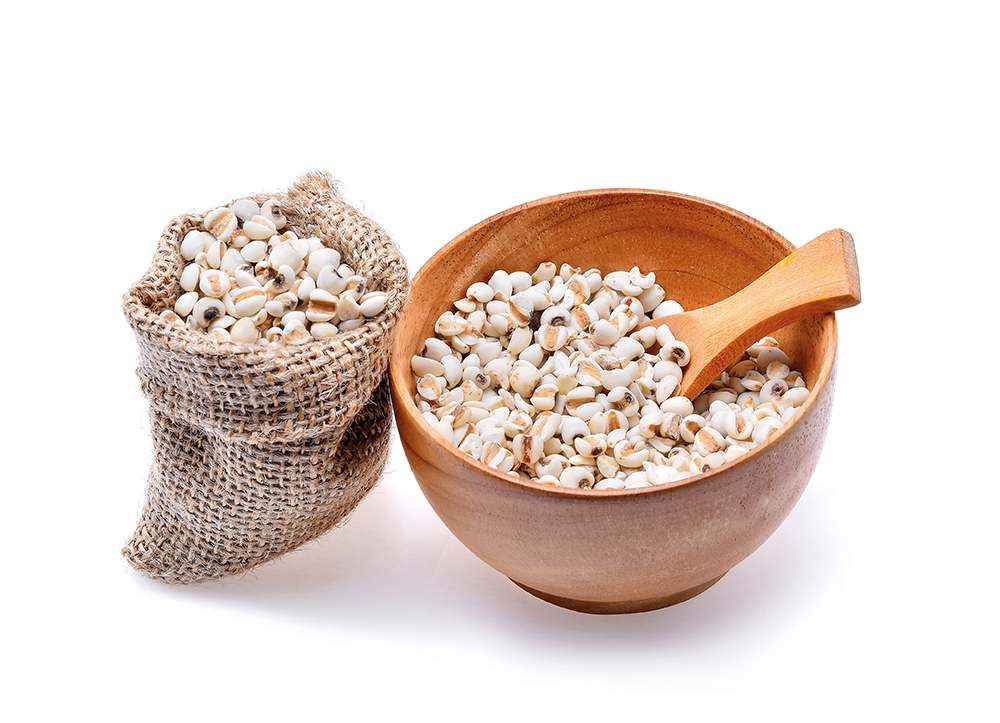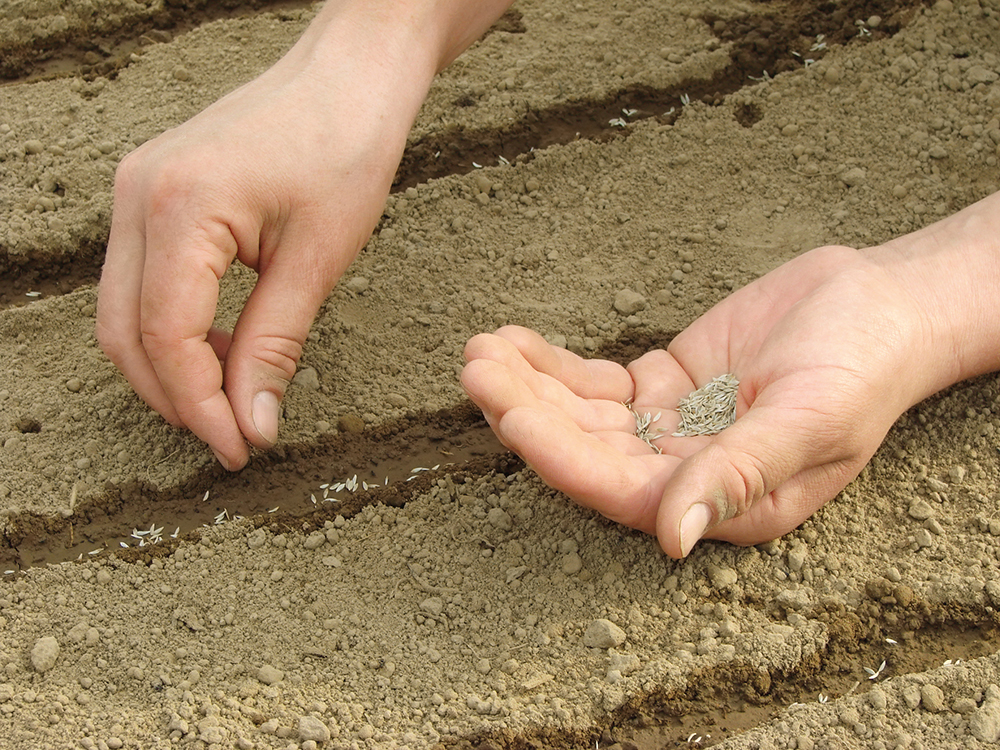Dr Elizabeth A. Cooper – New Sorghum Reference Genome Highlights Genetics Underlying Sweet Varieties
Sorghum is a staple crop in many regions of the world. As such, this versatile plant has been selectively bred into a number of cultivars, including sweet varieties predominantly used for forage, silage, sweet syrup and bioenergy production. Dr Elizabeth A. Cooper and her team at the University of North Carolina at Charlotte generated a full reference genome for the sweet sorghum cultivar ‘Rio’ with the aim of understanding the genetics underlying the differences between grain and sweet cultivars. Their research could provide a vital tool for biologists and breeders to improve sweet sorghum lineages.
Crop Diversification Through Selective Breeding
The process of crop domestication generally consists of two stages. Initially, a wild plant is cultivated by humans for food or other purposes. Subsequently, these domesticated plants are ‘selectively bred’ by crossing plants exhibiting desirable characteristics, such as fast growth, disease resistance, and higher productivity. This ‘diversification process’ – when one population differentiates into two or more – produces separate plant cultivars which are specialised for particular purposes.
The cereal crop plant Sorghum bicolor, often known simply as sorghum, is an excellent example of this process. Through selective breeding, numerous sorghum cultivars have been produced, including sweet varieties that accumulate sugars in the leaves and stems of the plants at much higher levels than traditional grain sorghum cultivars. The drastic differences in the sweet cultivar ‘phenotype’, that is, the set of characteristics they exhibit, are produced by differences in the genes of these plant lineages that arose as they were selectively bred. However, the genetic mechanisms behind the sweet sorghum cultivars’ sugar production and storage are still poorly understood.
In collaboration with the USA Department of Energy’s Joint Genome Institute and other researchers from Clemson University in South Carolina, USA, Dr Elizabeth A. Cooper and her team at the University of North Carolina at Charlotte, USA have used advanced genetic sequencing techniques to generate a full reference ‘genome’, the sequence of all the DNA building blocks that comprise the genes for the sweet sorghum cultivar ‘Rio’. Through examination of the Rio genome and comparison with a common grain sorghum genome, they aim to investigate the genetic mechanisms behind sweet phenotypes in sorghum. Their work highlights the genes that could be used as targets for further improvements to the lineage by breeders and biologists. Additionally, their work provides an insight into how evolution and selection shape the genome.

Genetic Differences Between Rio and BTx623
The reference genome for sorghum that was available previously is for the short-statured, early maturing, grain sorghum cultivar ‘BTx623’. The phenotype of this sorghum variety is very distinct from Rio and other sweet sorghum cultivars typically grown for their sugar content and high yields, and thus, provides a valuable comparison for exploring the genetic basis for these differences.
Among the whole-gene differences between the two varieties, 54 genes appear to be unique to Rio, and 276 genes were present in BTx623 but absent from Rio. The majority of the differences between the sorghum varieties occur in genes belonging to large gene families that have been extensively expanded in grasses, including groups of genes involved in disease resistance, vegetative growth and plant stature, and stress responses. Dr Cooper and her team suggest that many of the differences between Rio and BTx623 reflect adaptations to local disease pressures. Other gene families present in BTx623 but not in Rio have a diverse array of functions within plants, and as such, may reflect any number of functional differences in the cultivars.
However, the number of whole-gene differences between the two lineages is relatively small, in comparison to the genetic diversity present in lineages of other crops, such as maize and rice. Dr Cooper and her team found that although the structure and content of the genomes are largely the same for both varieties, there are over two million small differences within the DNA sequence itself that affect the type and structure of the functional proteins produced within the plants’ cells. These proteins have a diverse array of functions within the plants, such as transporting sugars between different regions of the plant.

Genetic Basis for Sweet Cultivars
Of the genes involved in sugar metabolism in sorghum, a small number of changes present in Rio involve sugar transport proteins. These transporters, which recently diversified in grasses, facilitate the movement of sugars between plant tissues, for example from the leaf in which the sugar is produced into the ‘phloem’ – the sugar-rich liquid transported around the plant in a system of vessels, comparable to the blood vessels in animals. Dr Cooper and her team discovered three sugar transporters are entirely absent in the Rio cultivar.
However, it is not yet clear how the loss of these sugar transporters affects sugar accumulation within the plants, because the specific function of the individual genes within the gene family are varied and not fully understood. ‘The fact that several of these transporters have been deleted in Rio could be indicative of a mechanism for retaining sugar in the stalk, rather than moving it into the seed as the final storage sink,’ suggests Dr Cooper. The genes responsible for these sugar transporters are ‘expressed’ – or turned on or off – at different times and locations within the developing sorghum plant.
Of the three transporter genes absent in Rio, one does not appear to be expressed at all in BTx623. This suggests that this is not a functional gene copy in sorghum and its deletion in Rio would have little to no effect. In contrast, another of the absent trio of genes is expressed in BTx623, particularly in the upper leaves and stalks during the flowering period. Dr Cooper and her team suggest that this indicates its absence in Rio may have significant effects on sugar metabolism.
Several other sugar transporters and sugar production proteins were produced in different quantities in the Rio and BTx623 cultivars, but these changes often did not correspond with any genetic differences between them. Dr Cooper suggests that instead, these proteins must be regulated through other means within the plants, such as the presence or absence of sugar within the cells, or the activity of other genes and proteins within the process. ‘These results highlight the complexity of the genetic interactions driving sugar accumulation in sorghum,’ notes Dr Cooper.

Sugar Accumulation Patterns During Development
A key objective for Dr Cooper and her team, in addition to identifying the differences in the genome of sweet sorghum cultivars, was to disentangle the effects of plant maturation rate from those related to sugar accumulation. Sweet sorghum varieties typically mature later than grain sorghums, with sugar accumulation appearing to be tightly linked with flowering. To achieve this aim, the researchers chose a grain sorghum cultivar – ‘PR22’ – with a low sugar concentration contrasting with that of Rio, but with a similar maturation pattern. Dr Cooper and her team obtained samples of the plant tissues, including from the upper leaves and stems, throughout the development of the Rio and PR22 plants, to compare the process of sugar accumulation over time.
In both cultivars, sugar concentration increased linearly over time. However, the rate of increase was faster and the maximum sugar concentration reached was higher in Rio than in PR22. Sugar concentration increases significantly in Rio approximately a third of the way through their development, during the phase when the uppermost leaf – the ‘flag leaf’ – develops. However, it is notable that most of the genes of interest exhibited a delay in their expression in the Rio cultivar, suggesting that Rio increases the sugar content in its stems by not breaking down the sugars for use as energy during the onset of the flowering phase, but rather delays this process until after flowering. Several sugar transporters, however, exhibit the opposite pattern, which may indicate their role in moving sugars into the stem.
Genes related to other processes involved in sugar production, such as those that control complex carbohydrate metabolism, were found to be more active in the stems of Rio even when the copy of the underlying gene is identical in the two cultivars. This finding suggests that the activity of these genes is being regulated through other means, for example, by other genes involved in the pathway, by genetic differences at other locations in the genome, or by responding to the concentration of sugars in the plant cell. Dr Cooper explains, ‘Rio begins to deposit sugar in the stems earlier in the growing season compared to the non-sweet sorghums, so it is inevitable that some changes in gene expression will begin to occur in processes that utilise sugars as their source.’
Some genes related to non-sugar transport proteins and other movement structures within the plant cells were expressed at higher levels in the stem and leaves of both cultivars. This suggests that these genes may also have important roles in the overall sugar accumulation process, even though they are not involved in sugar metabolism directly.

Building on the Foundation
Dr Cooper and her team’s research provides a valuable insight into the complex genetic mechanisms underlying sugar production and accumulation in sorghum varieties. Even though the overall structure of the genome is similar between grain and sweet sorghum phenotypes, the key changes in genes regulating sugar processes, sugar transporters and sugar metabolism together play important roles in the accumulation of stem sugars. Their research findings and Rio reference genome will provide the foundation necessary for additional research aimed at improving sorghum cultivars further. Additionally, the sorghum cultivars examined by Dr Cooper and her team represent only a small proportion of the diversity present in sorghum lineages, and further opportunities exist to expand this research to incorporate additional cultivars.
Reference
https://doi.org/10.33548/SCIENTIA548
Meet the researcher

Dr Elizabeth A. Cooper
Department of Bioinformatics and Genomics
University of North Carolina Charlotte
Charlotte, NC
USA
Dr Elizabeth A. Cooper earned her PhD in Molecular Biology at the University of Southern California, USA, before continuing onto postdoctoral research at the University of Miami, USA. She developed an interest in applying her expertise in evolutionary biology and genomics to agricultural systems during her subsequent positions at Clemson University, USA. She currently holds the position of Assistant Professor in Bioinformatics and Genomics at University of North Carolina Charlotte, USA, where her research team uses advanced technology to investigate the genetic basis of complex characteristics in a range of agricultural plants and other organisms. She is especially interested in examining the characteristics that lead to diversification amongst closely related groups. In addition to her research, Dr Cooper also devotes her time to teaching courses in genomics and evolution, and supervising the early-stage researchers in her laboratory.
CONTACT
E: lizcooper@uncc.edu
KEY COLLABORATORS
Stephen Kresovich, Clemson University
Christopher Saski, Clemson University
Jeremy Schmutz, Hudson Alpha Institute
FUNDING
US DoE – Advanced Research Projects Agency (Energy)
FURTHER READING
EA Cooper, ZW Brenton, BS Flinn, J Jenkins, S Shu, D Flowers, F Luo, Y Wang, P Xia, K Barry, C Daum, A Lipzen, Y Yoshinaga, J Schmutz, C Saski, W Vermerris, S Kresovich. A new reference genome for Sorghum bicolor reveals high levels of sequence similarity between sweet and grain genotypes: implications for the genetics of sugar metabolism, BMC genomics, 2019, 20(1), 420.


Want to republish our articles?
We encourage all formats of sharing and republishing of our articles. Whether you want to host on your website, publication or blog, we welcome this. Find out more
Creative Commons Licence
(CC BY 4.0)
This work is licensed under a Creative Commons Attribution 4.0 International License. 
What does this mean?
Share: You can copy and redistribute the material in any medium or format
Adapt: You can change, and build upon the material for any purpose, even commercially.
Credit: You must give appropriate credit, provide a link to the license, and indicate if changes were made.
More articles you may like
Grandmothers: Innovation Through Tradition
Grandmother Project – Change through Culture (GMP) is an organisation dedicated to documenting the role of grandmothers and demonstrating the effectiveness of grandmother-inclusive strategies in improving the health and well-being of women, children, and adolescents. GMP’s groundbreaking work challenges conventional wisdom to transform community-based interventions in Africa and beyond, harnessing a powerful but often overlooked resource: the wisdom and influence of grandmothers.
Dr Robert Larkin | Cultivating Change to Improve Soil Health and Increase Potato Yield
Environmental quality and food production are facing the pressing challenges of climate change and global population growth. Dr Robert Larkin from the United States Department of Agriculture-Agricultural Research Service (USDA-ARS) and a team of plant scientists developed and tested a range of crop management systems to help overcome these compounding challenges. Their work is improving soil health and increasing the yield of potato crops, contributing to the future food security of nations.
Professor Giorgio Buttazzo | Artificial Intelligence and a Crossroads for Humanity
Where do we stand with artificial intelligence? Might machines take over our jobs? Can machines become conscious? Might we be harmed by robots? What is the future of humanity? Professor Giorgio Buttazzo of Scuola Superiore Sant’Anna is an expert in artificial intelligence and neural networks. In a recent publication, he provides considered insights into some of the most pressing questions surrounding artificial intelligence and humanity.
Dr Ralf Adam | New Technologies Shaping the Future of Oral Hygiene
Understanding the efficiency of various toothbrush technologies is essential for achieving optimal oral health. Dr Ralf Adam, who leads a dedicated team at Procter & Gamble in Germany, is keen to investigate the complexities of these technologies. His team have provided new insights into the best toothbrush types for plaque removal and the maintenance of gum health. By highlighting the importance of informed oral care decisions and ongoing investigations, this vital research works towards ensuring everyone can achieve a brighter, healthier smile.




